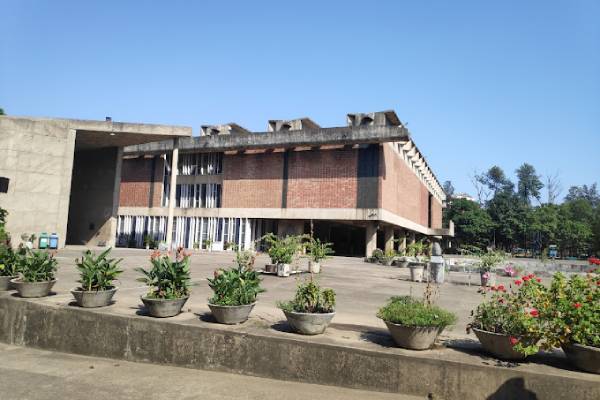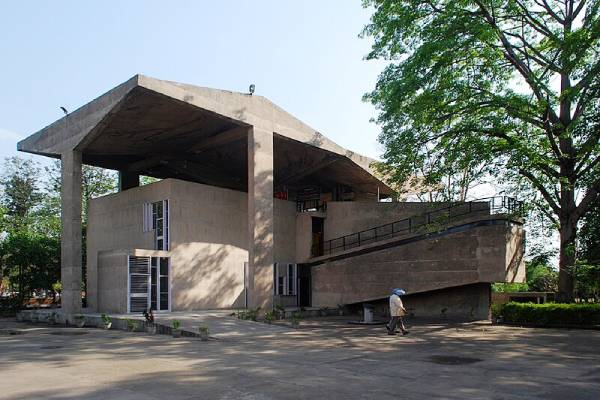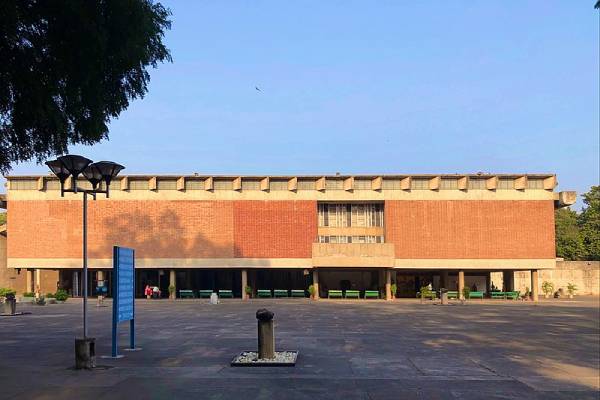Architectural Marvel
Designed by Le Corbusier, along with architects Manmohan Nath Sharma, Pierre Jeanneret, and Shiv Dutt Sharma, the museum’s construction spanned from 1962 to 1967. It is one of Le Corbusier’s three iconic museum designs, alongside Sanskar Kendra in Ahmedabad and the National Museum of Western Art in Tokyo. The building’s distinctive features, such as the pivoted entrance and exposed concrete sculptures, are emblematic of Chandigarh’s architectural style.

A Hub of Cultural Knowledge
Envisioned as a beacon of knowledge transmission in the Second Five Year Plan and National Education Policy, the museum is a valuable cultural and historical resource for the region. Its extensive collection includes Gandhara sculptures, Pahari miniature paintings, and contemporary Indian art, making it a magnet for tourists, artists, scholars, and students. Notably, it also attracts researchers and scholars in the fields of Le Corbusier and Modernization.


The Museum’s Offerings
The museum boasts a rich library housing a plethora of books on art, architecture, and art history. It includes a special section dedicated to Dr. M.S. Randhawa, offering scholars access to digitized archival records related to the Making of Chandigarh. The adjacent auditorium serves as a versatile space for lectures, film screenings, and cultural events, showcasing the Modernist tradition introduced by Le Corbusier in Chandigarh.
A Three-Level Haven
The building is strategically divided into three levels, each with its unique offerings. The first level encompasses various facilities, including exhibition halls, reserve collections, and the conservation laboratory. Level two hosts exhibitions on Gandhara sculpture, Indian miniature paintings, and more. The third level is home to the library, chairman’s room, and a reserve collection store for Gandhara sculptures.
Accessible and Inclusive
Open to the public from Tuesday to Sunday, the museum provides a welcoming environment for all. Admission is priced at ₹10, with an additional ₹5 for photography. School groups and senior citizens enjoy complimentary entry. The museum also accommodates those with physical challenges by providing wheelchairs. Additionally, the auditorium is available for cultural and educational events at affordable rates.
Collections: A Glimpse into History
The museum’s extensive collection traces its origins to the partition of India in 1947. Notably, it received a significant share of the Central Museum, Lahore’s collection, including a remarkable assortment of Gandhara sculptures. Over time, Dr. M.S. Randhawa enriched the collection with Pahari miniature paintings and contemporary Indian art, elevating it to the ranks of North India’s leading museums.
From Gandhara Art to Contemporary Creations
The museum’s offerings span a wide spectrum, from Gandhara sculptures to ancient and medieval Indian sculptures, metal sculptures, miniatures, manuscripts, textiles, numismatics, and contemporary Indian art. Each category showcases the rich tapestry of India’s cultural heritage.
Natural History Museum and Architecture Museum
In addition to its art and cultural exhibits, the Government Museum complex houses a Natural History Museum, offering insights into human evolution and the region’s prehistoric past. The Architecture Museum, established in 1997, is a treasure trove of documents, drawings, and archives related to the creation of Chandigarh.
Conclusion
The Government Museum and Art Gallery, with its rich history, diverse collections, and architectural grandeur, stands as a testament to the vibrant cultural heritage of the region. It beckons visitors to embark on a journey through time and immerse themselves in the artistic and historical tapestry of India.
